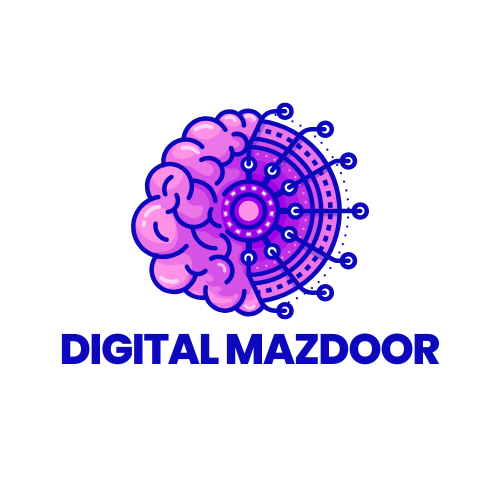In the ever-evolving world of fashion, where trends change faster than seasons, your website is your digital storefront — the first impression that defines your brand identity. Whether you’re a makeup artist, clothing boutique, or luxury designer, your website design plays a vital role in how customers perceive your brand and whether they decide to trust and buy from you.
A great fashion website isn’t just about visuals. It’s about how design, marketing, and storytelling come together to reflect your unique style. From typography and photography to mobile responsiveness and SEO structure — every detail matters.
Below, we’ll explore some of the best fashion website designs that have set the bar high in creativity, usability, and conversion-focused marketing.
1. Glam by Duaa – Elegance Meets Modern Minimalism
Glam by Duaa is a shining example of how elegance and minimalism can merge to create an unforgettable online experience. The brand, built around the artistry of makeup and styling, communicates sophistication through every pixel.
The site uses soft, neutral colors that immediately feel luxurious and calm. The typography is clean and graceful, perfectly complementing the brand’s tone. But what truly stands out is the photography — crisp, well-lit, and emotionally expressive, giving visitors a sense of the makeup artist’s personality and professional touch.
The user experience (UX) is simple and intuitive. Visitors can easily navigate through services, lookbooks, and contact details without feeling overwhelmed. The responsive design ensures it looks equally stunning on mobile devices — a must-have for any fashion or beauty brand in today’s world.
From a digital marketing perspective, Glam by Duaa also leverages essential on-page SEO techniques: optimized meta tags, clear call-to-action buttons (“Book Now,” “View Portfolio”), and fast page loading times. Together, these create an experience that is not only visually appealing but also designed to attract and convert new clients.
2. Gucci – Digital Storytelling at Its Finest
When it comes to luxury fashion websites, Gucci’s online presence is a masterclass in digital storytelling. Every section of the website feels like a chapter in a brand narrative — combining cinematic visuals, bold photography, and avant-garde layouts that echo Gucci’s timeless reputation.
The homepage transitions smoothly between campaigns, collections, and behind-the-scenes stories, drawing users into a luxurious world of creativity. The typography is bold yet elegant, while the dark backgrounds and high-quality product images reinforce the brand’s sophistication.
From a marketing standpoint, Gucci integrates immersive storytelling with eCommerce perfectly. Every product page feels editorial — not just transactional. That’s a huge lesson for any fashion entrepreneur: your website should sell a story before it sells a product.
3. Zara – Minimal Design That Drives Conversions
Zara proves that less is more in fashion web design. The Spanish retailer’s site is minimal, with a black-and-white color scheme that keeps the focus entirely on the products. Large, edge-to-edge visuals let visitors appreciate the textures, cuts, and details of each garment.
What makes Zara’s design exceptional is its balance of speed and simplicity. Every page loads fast, navigation is smooth, and the checkout process is optimized for mobile users. Zara’s success demonstrates how UX (user experience) directly influences sales — clean, distraction-free design increases conversions.
Behind the scenes, Zara’s site is also a marketing powerhouse. With strong SEO architecture, clear product categorization, and image optimization, the brand ensures discoverability across global markets. For fashion startups looking to improve their SEO, understanding the future of SEO and voice search can be a great next step to future-proof their digital visibility.
4. Revolve – The Power of Trend-Driven Design
Revolve has mastered the art of blending fashion, community, and social media. Its website is vibrant, modern, and inspired by influencer culture. The homepage immediately captures your attention with lively photography, featuring real influencers wearing Revolve products.
From an eCommerce perspective, Revolve integrates shoppable looks, quick-view options, and real-time sales prompts to boost conversions. But more than that, it makes the user feel part of an exclusive, fashionable community.
The brand’s smart integration of Instagram aesthetics and influencer content shows how fashion websites can use design as a tool for both engagement and credibility. It’s not just about visuals — it’s about creating a brand lifestyle users want to be part of.
5. ASOS – Inclusive, Interactive, and Fun
ASOS focuses heavily on inclusivity and engagement — from diverse model representation to interactive filters that make shopping fun. The design is youthful and energetic, yet easy to navigate.
ASOS also does an excellent job with email capture, personalized recommendations, and retargeting, showing how design and digital marketing work hand in hand to drive loyalty.
The user journey is seamless — from discovering products to checking out. ASOS’s clever use of visual hierarchy ensures every element guides the customer toward making a purchase.
Brands in the UK looking to expand their reach through SEO can explore SEO services in Oxford and SEO services in Leicester to ensure their websites rank higher for local fashion and eCommerce searches.
6. Farfetch – Editorial Meets eCommerce
Farfetch combines luxury eCommerce with an editorial magazine feel. Their design uses elegant spacing, modern typography, and curated visuals to give off a “high-end fashion journal” vibe.
The homepage highlights designer collections and trends while keeping navigation structured and intuitive. The use of storytelling in product descriptions — focusing on designer inspiration, materials, and craftsmanship — elevates the user experience beyond simple shopping.
This design philosophy is ideal for brands that want to position themselves in the luxury or premium fashion segment.
Design & Marketing Takeaways for Fashion Brands
Whether you’re launching your first fashion website or redesigning your existing one, here are some proven lessons from these top brands:
-
🎨 Visual Consistency is Everything: Stick to a consistent color scheme, font family, and tone that align with your brand personality.
-
📸 Photography Sells More Than Words: Use professional, high-resolution imagery that evokes emotion and tells a story.
-
📱 Mobile-First Design: Over 70% of online fashion sales now happen on smartphones — your design must look flawless on mobile screens.
-
⚡ Fast Load Speeds Matter: Fashion visuals can be heavy; optimize images to maintain speed without losing quality.
-
🧭 Simple Navigation: Limit menu items and make it easy for users to find what they need quickly.
-
🛍️ CTAs That Convert: Strategically place “Shop Now,” “Book Appointment,” or “Explore Collection” buttons where they naturally attract attention.
-
📈 Integrate SEO and Analytics: Beautiful design is useless if no one sees it. Combine strong SEO structure and Google Analytics tracking to monitor performance.
-
💬 Tell Your Brand Story: Visitors should instantly understand who you are, what you offer, and why you’re unique.
Final Thoughts
Fashion is all about expression — and your website should be too. From minimalist elegance like Glam by Duaa to luxury storytelling from Gucci, every brand can use design as a bridge between creativity and commerce.
A well-designed website does more than impress — it builds trust, improves SEO, and drives conversions. When paired with the right digital marketing strategy, your online presence becomes a powerful growth engine.
If you’re ready to elevate your fashion website design, Digital Mazdor can help you create a modern, high-performing site that reflects your brand’s identity while maximizing your online visibility.
Written by Digital Mazdor — a UK-based creative digital marketing agency helping fashion, beauty, and lifestyle brands grow through impactful web design, SEO, and content marketing.

